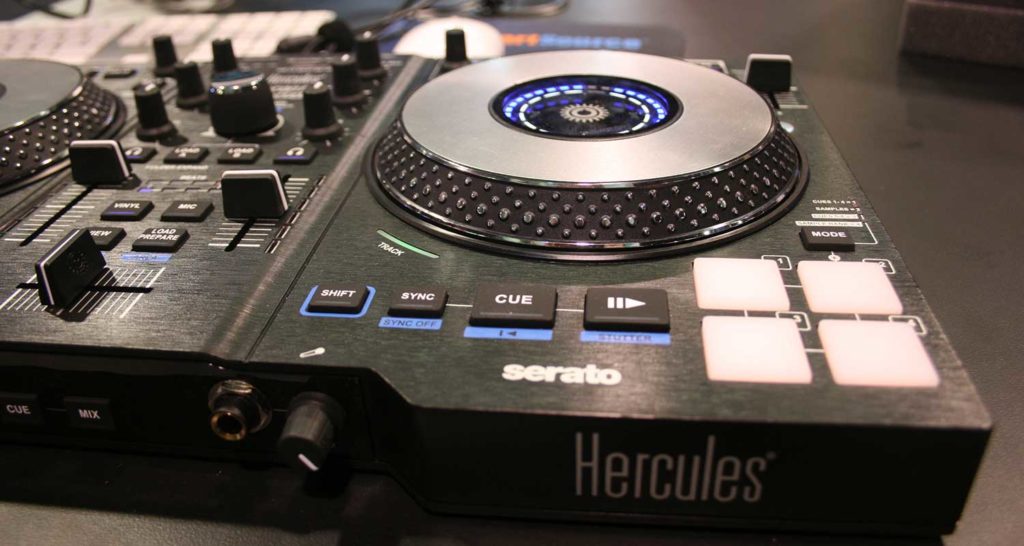
What is beatmatching?
One of the DJ’s key missions is therefore to adjust the tempo of track B (the incoming track) so that it’s as close as possible to the tempo of track A (the outgoing track). To achieve this, you’ll listen to track B on your headphones only, and you’ll compare it “by ear” with track A being played out loud over the speakers in the room, adjusting track B’s playback speed to synchronize it with the speed of track A, which your audience is already listening and dancing to (this is what’s called the phasing step).
Once you’ve made sure that the synchronization lasts long enough (at least 20 to 30 seconds or more, preferably), you can take track B back to the beginning (maintaining the tempo adjustment) and use your mixing controller to elegantly and smoothly fade in the incoming track at the same time as you fade out the outgoing track.
Being able to successfully accomplish this therefore means that you have to perfectly know the tracks that you want to play, including how the different sections of each track progress from one to the other – intro, verse, chorus, bridge, outro (the conclusion of the track, i.e. the opposite of the track’s introduction) – in order to properly manage the transitions between tracks.
Some techniques to keep in mind:
When you play your first track and it starts getting toward the end (i.e. the outro), you should be thinking about starting the second track to coincide with the stressed beat of the first track: this is what’s called “Dropping on the One”. Our DJUCED® software lets you analyze the music with waveforms, as well as by way of beats and bars, in order to visually help out the DJ.
We’ve just seen how important it is to start the second track to coincide with the stressed beat of the first track – however, “Dropping on the One” isn’t always perfect. That’s why the DJ needs to adjust the second track’s phase to match the first track’s phase: this means temporarily speeding up or slowing down the second track, so that its beats line up properly with the beats of the first track. You’ll do this step on your headphones. The challenge when carrying this out by ear is knowing whether the track that you want to adjust is ahead of or behind the previous track.
We refer to crossfading between two tracks as the point of transition: the DJ will crossfade between the tracks using a mixing controller. There are many different possible types of transitions, used according to the DJ’s mixing style, the music being played and the hardware available.
How to use the pitchfader?